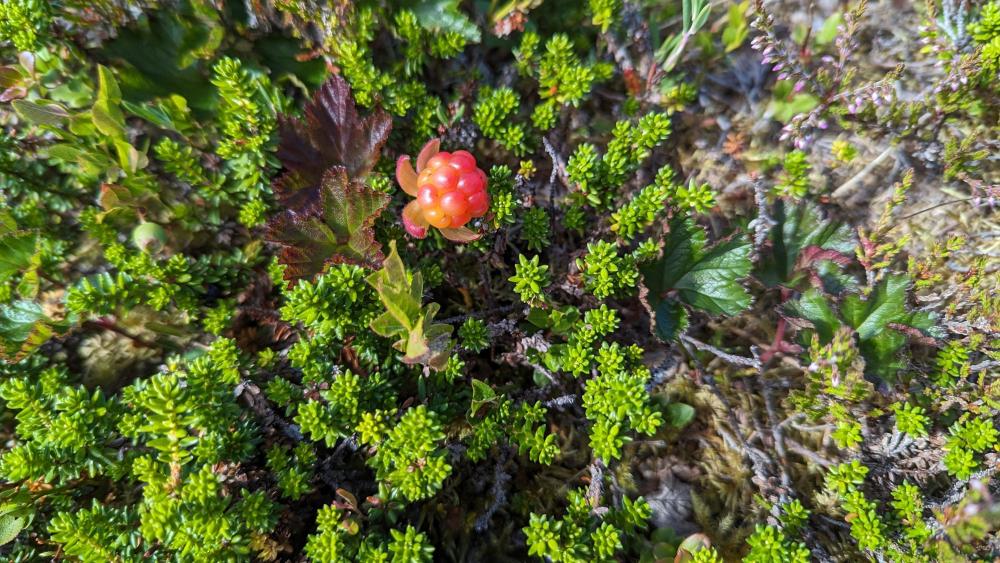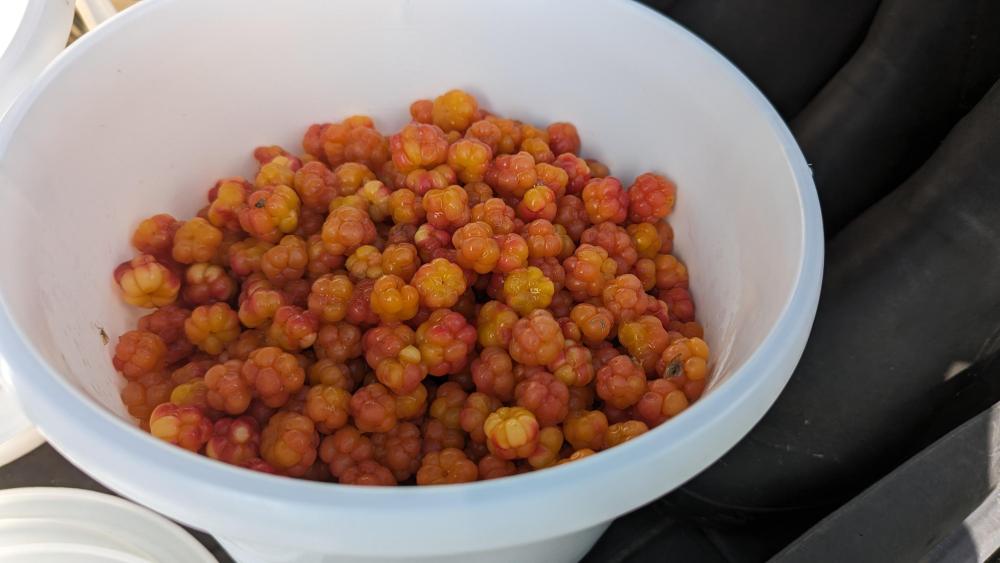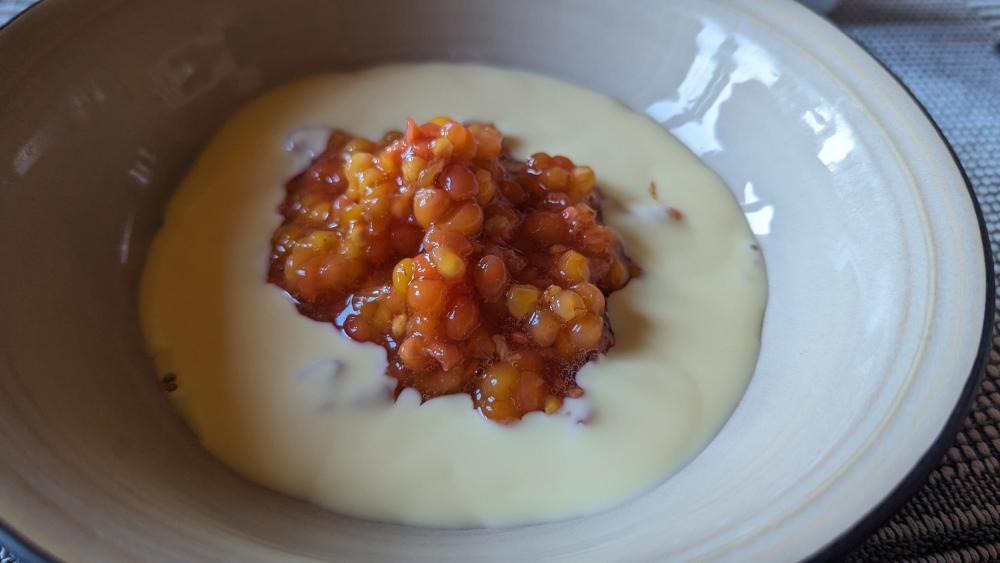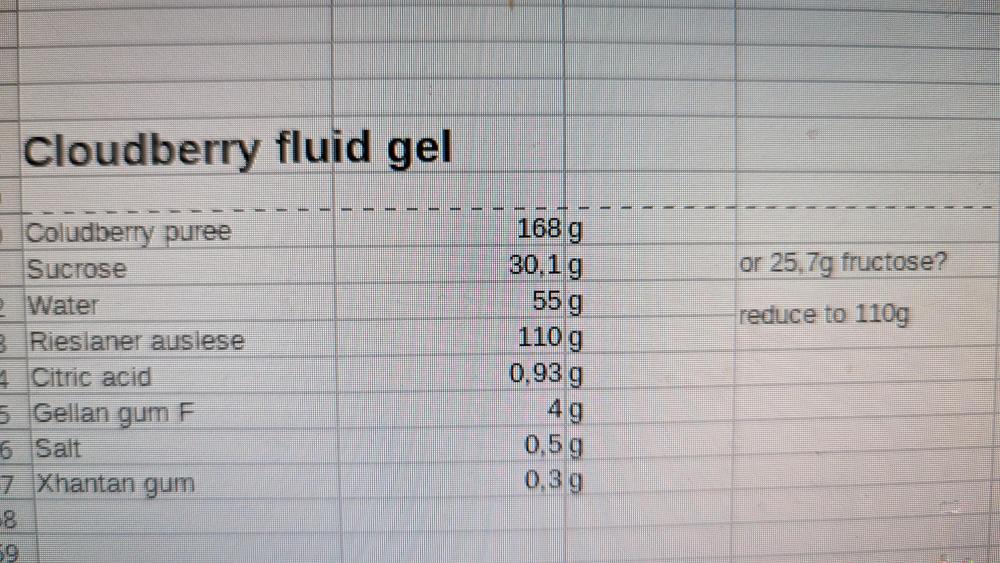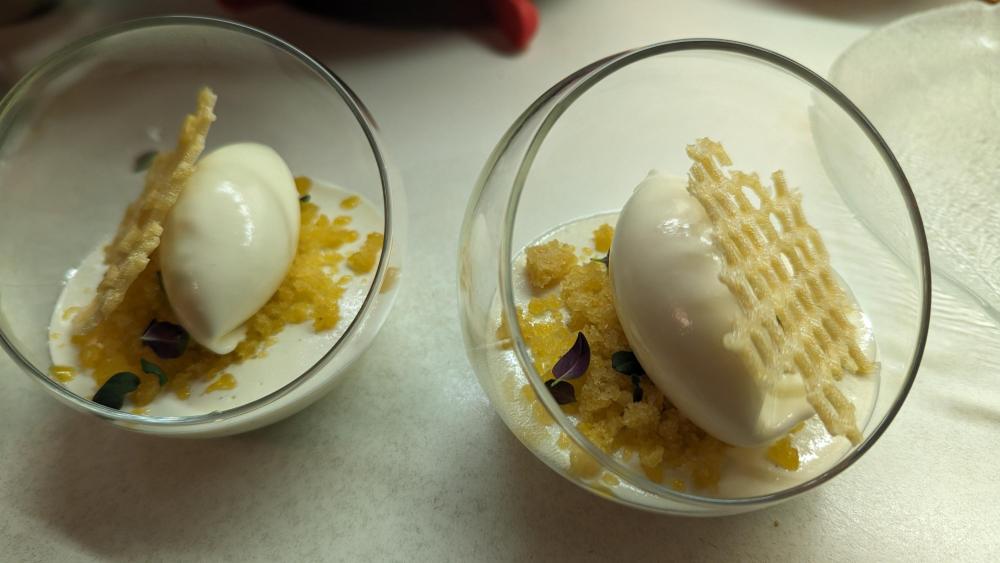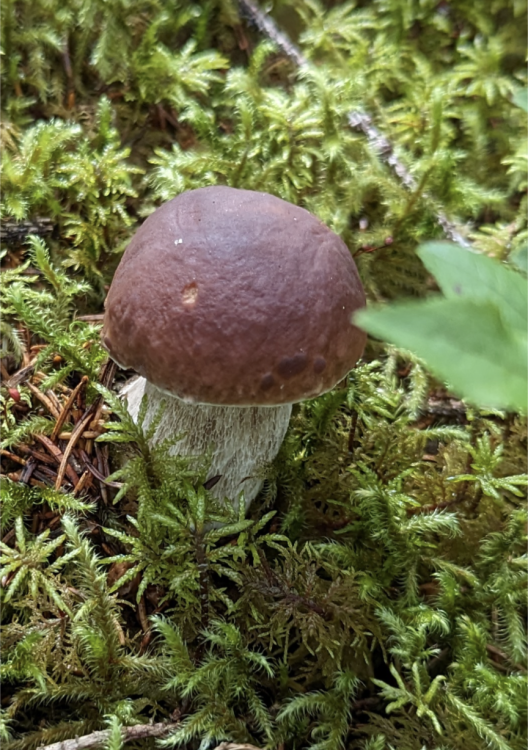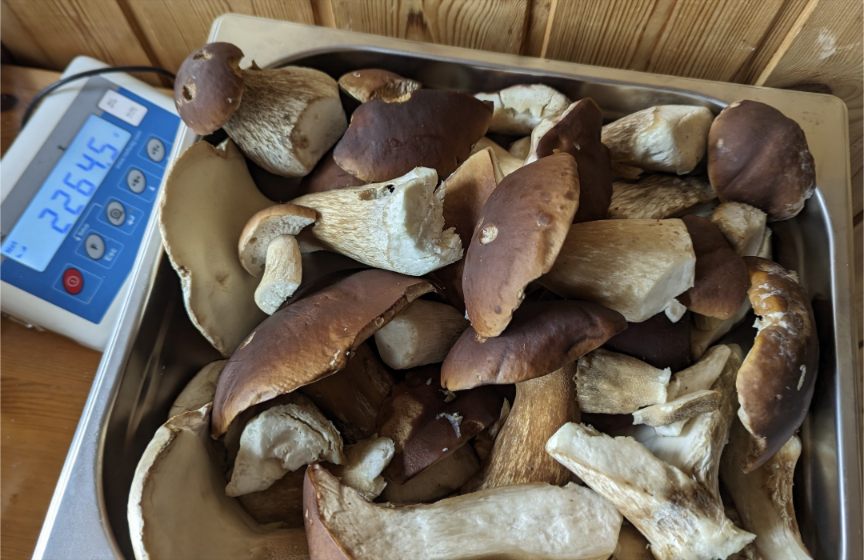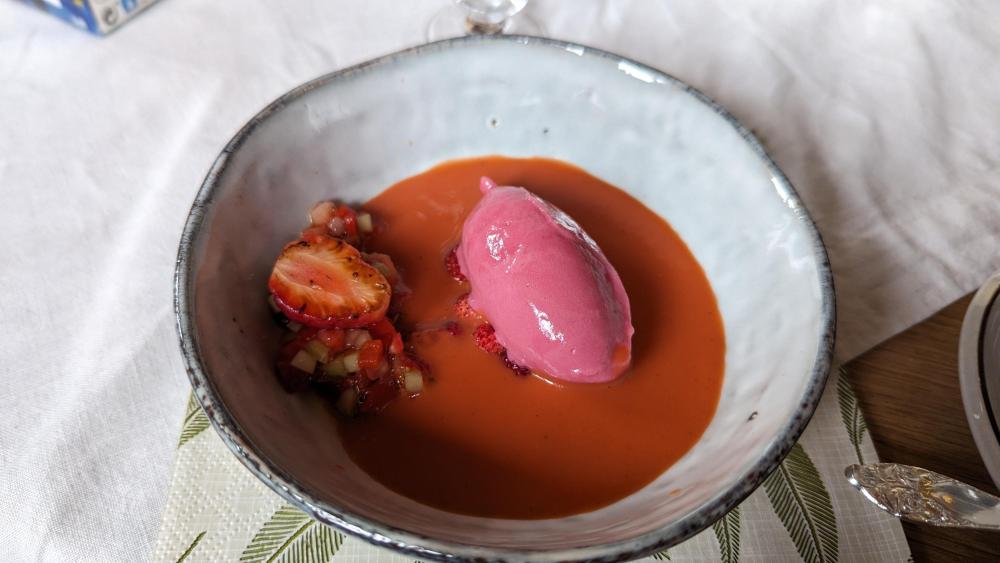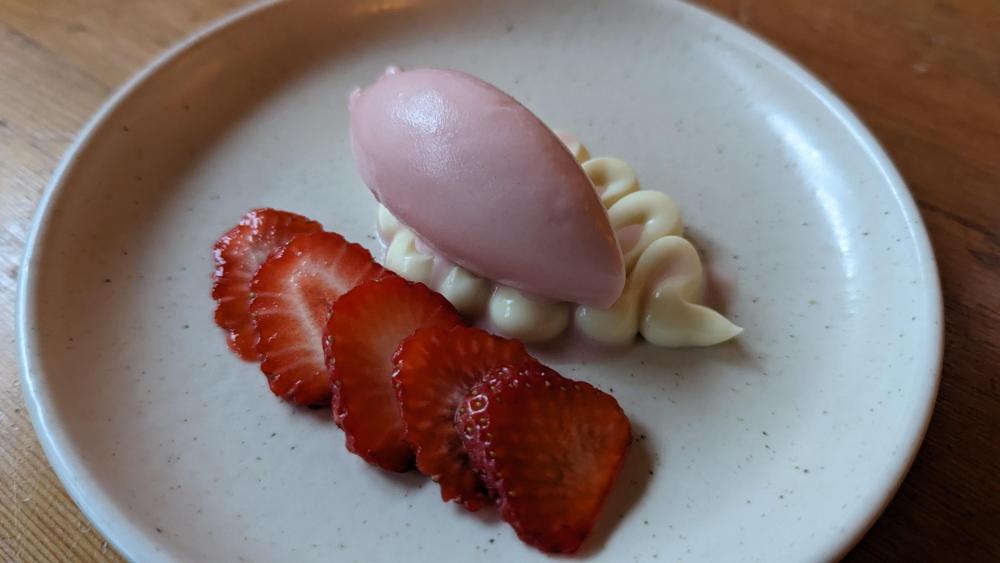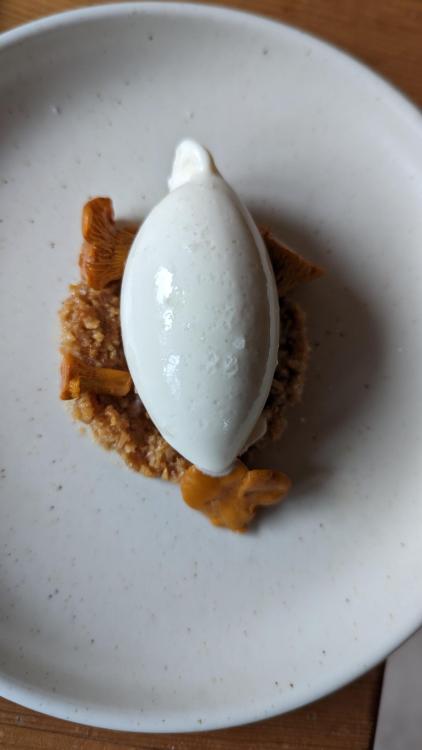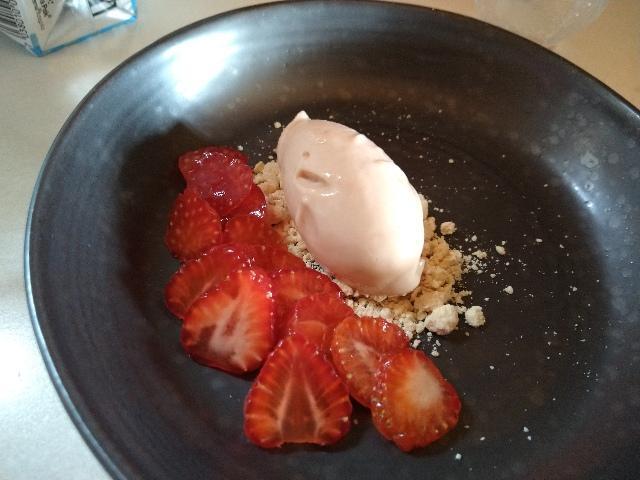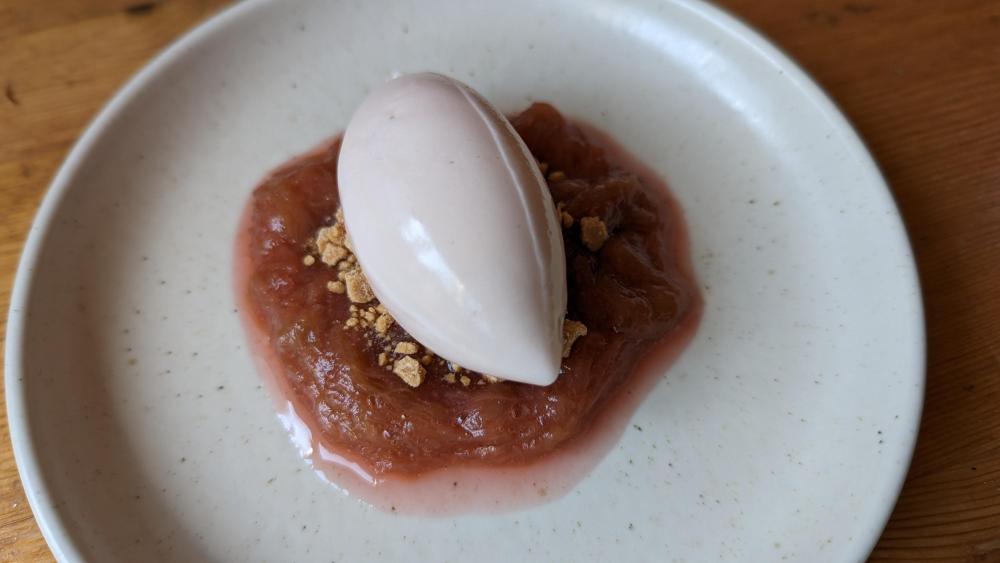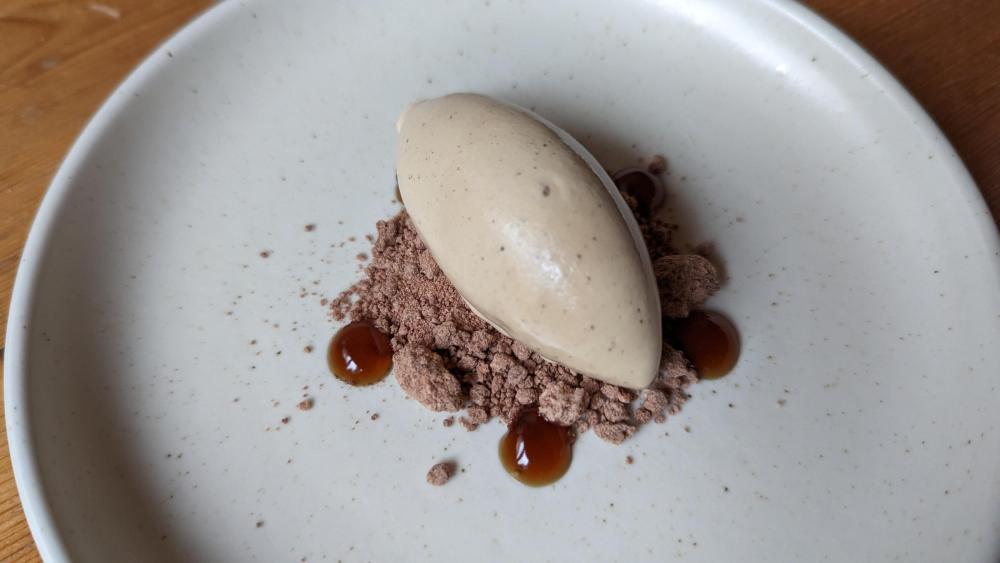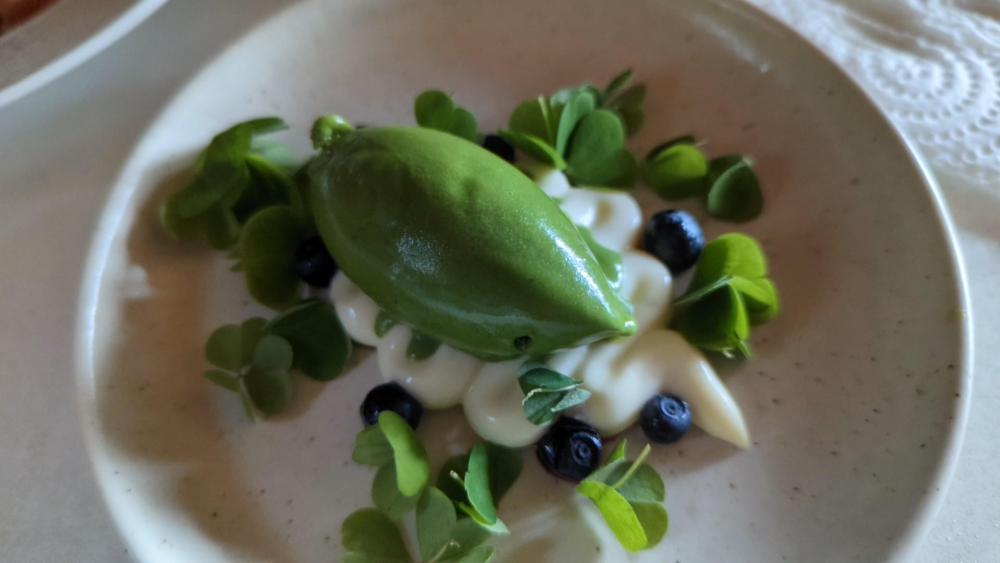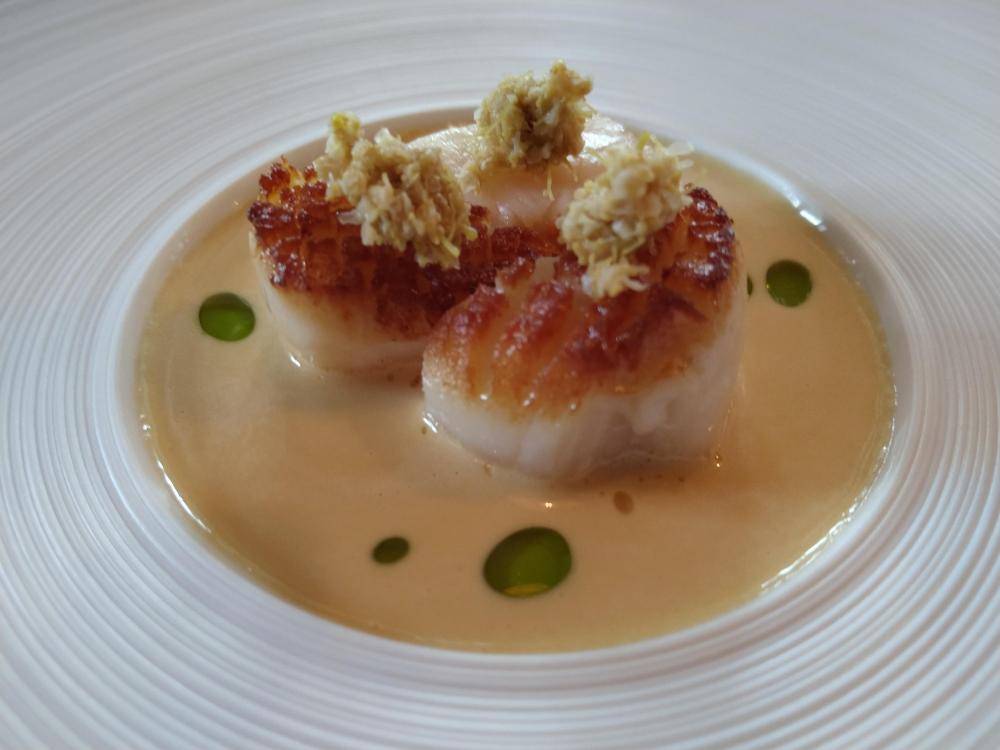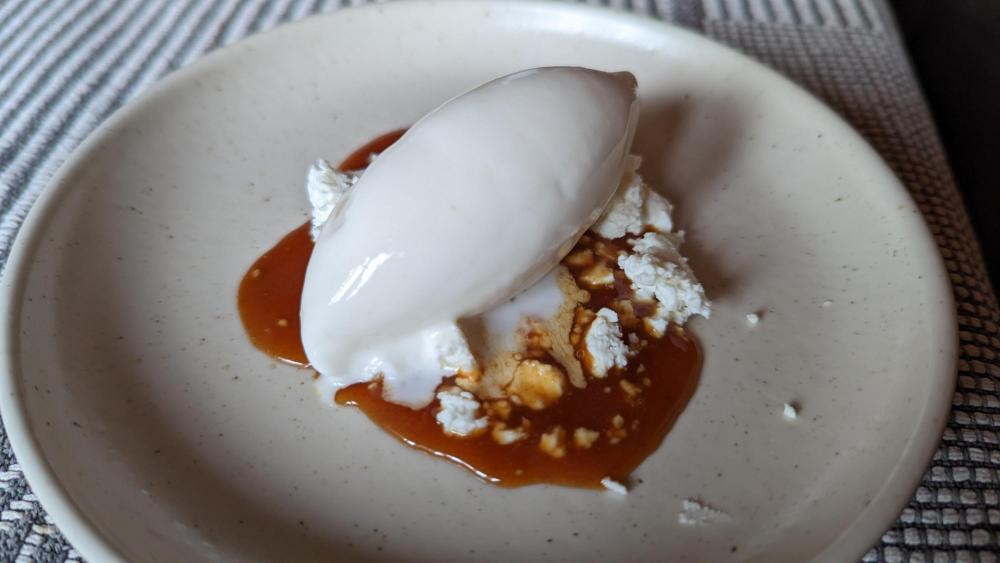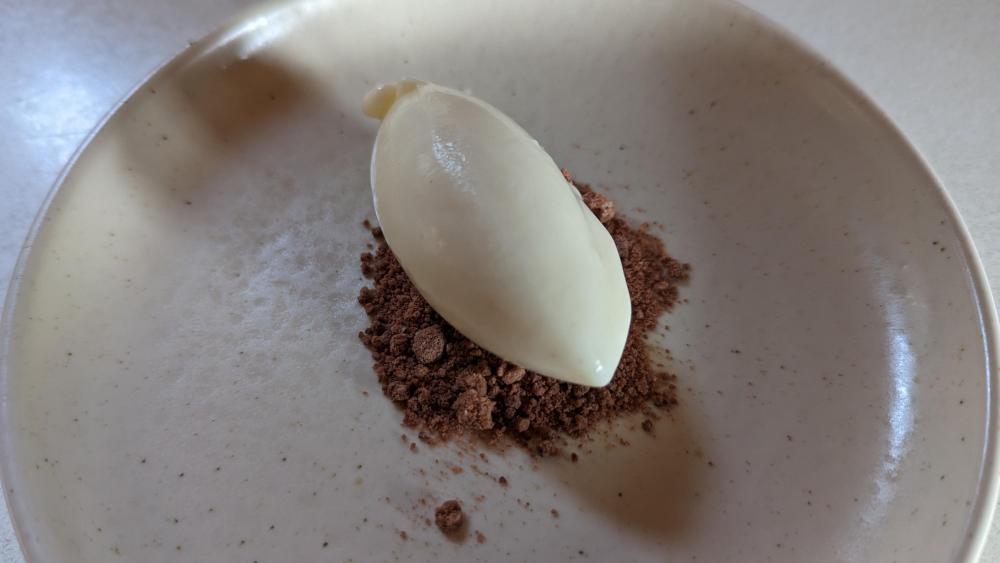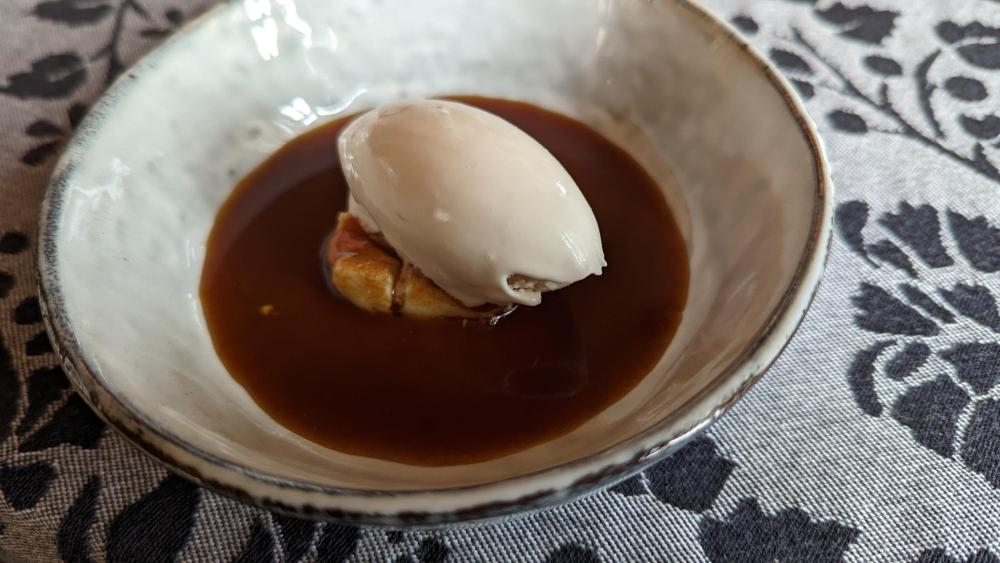
sverreef
participating member-
Posts
96 -
Joined
-
Last visited
Content Type
Profiles
Forums
Store
Help Articles
Everything posted by sverreef
-
Norway is correct 🙂 I don't mind the seeds when I pick them straight into my mouth (or if I don't have enough left for a reasonably sized vacuum pouch), but in a dessert, they should definitely be removed.
-
I pick them and make it myself: My cloudberry fluid gel is a mix between a cloudberry sauce/coulis I've made and improved upon for years and the Chefsteps fresh orange fluid gel recipe: https://www.chefsteps.com/activities/fresh-orange-fluid-gel The ingredients of the granita I made yesterday was identical to this, with the exception that gellan and xhantan gum was substituted with 2.5g gelatin, and I also omitted the salt. The granita was OK, but unlike the fluid gel, it needs more work, or maybe I just served it too cold?
-
I love the artistic flair of your plating, @EnriqueB. Lots of inspiration there, and your flavour combinations sounds intriguing too 🙂 I REALLY need to figure out a way to run ICC on one of my Linux computers soon. If not, I guess I'll have to invest in a cheap Windows tablet just for ICC... Here are a couple of my latest experiments by the way: Pineapple sorbet Adapted from the MC sour rhubarb sorbet recipe. 407g Boiron Pineapple puree 56g Glucose powder DE42 16g Sugar/sucrose 1,5g Salt 3g Citric acid (to taste) Everything added to blender for a quick blend before filling the Creami pint and freezing. The texture and flavour of the sorbet were both spot on. The toasted coconut milk curds (latik?) and pineapple caramel needs tweaking however. I should also have used a flavourful liquid when I compressed the fresh pineapple, but I didn't have anything available at the time. Today, I did a test of our Christmas Eve ice cream, which I prepared a triple batch of earlier this week. Thyme infused Creme Fraiche ice cream Served with vanilla panna cotta, cloudberry granita (will be replaced with cloudberry fluid gel on Christmas Eve for better flavour release) and honeycomb tuile. The ice cream base is as usual the Chefsteps creme fraiche ice cream, which has been infused (sous vide) with fresh thyme for 20 minutes at 80 degrees Celsius. A big thanks to @paulraphael for the inspiration and ratios for the infusion. Unlike the pineapple sorbet, the thyme ice cream was not a hit with my nephew and niece, but it's one of my absolute favourites, and as a bonus, the flavour pairs really well with cloudberries 😀
-
Approximately, somewhere along the west coast of Norway...😋
-
I got lucky and caught the back end of a decent Boletus edulis "fruiting" about a month ago. Ended up with over 2 kilograms, including a few bay boletes (Imleria badia), which was a first for me 🙂 Not that I really need more boletes now, but I'm hoping for a second fruiting later this month or early October.
-
I'm really looking forward to see what you'll make with your Creami, Mars. Once I'm done with the mushroom foraging season, I also have to have a proper look at your IG 🙂 Between fly fishing and vacation trips, I've not had much time to make ice creams. I finally gathered all the ingredients (minus freeze dried strawberry powder) and the time to make the complete Modernist Cuisine sour rhubarb sorbet dish. Both the salad and the gazpacho tasted great, but I feel that they didn't work 100 per cent together with the rhubarb sorbet. Sorbet made with Fulton's strawberry surprise rhubarb. Good flavour, but the texture was a bit too sticky. I think maybe the length the rhubarb stems are cut before you sous vide them impact the amount of pectin you end up with after the straining step? At least I've had my best result when I cut the rhubarb in 2-3cm pieces. I also made a strawberry version of the blueberry/creme fraiche recipe I posted back in March: Good flavour, but the highlight of the dish is definitely the pairing of strawberry and roasted pumpkin seed praline (hidden under the fresh strawberries), which I've tried to recreate from a strawberry desert I got at restaurant Kontrast in Oslo two years ago. Lastly, I found over 2 kilos of cep/penny bun/porchini mushrooms (Boletus edulis a couple of weeks ago, so naturally, I had to try to make a mushroom ice cream.... As usual, I used the CS creme fraiche recipe as the base, and modified it with cues from this grilled cep ice cream recipe from El Celler de Can Roca: http://www.lomejordelagastronomia.com/en/dishes/grilled-cep-ice-cream-0 I made two batches. This one is without the deglazed pan juices and had a very clean, fruity and distinct cep flavour. I skipped the caramel, smoke and confit cep caps from the El Celler de Can Roca recipe, but together with an almond crumble (100g peeled and roasted almonds, 2g salt, 68g Scandinavian dark syrup) and pickled chanterelles, it was simply amazing 😀 The pickled chanterelles were made following Mikael Svensson's recipe, and aged for three years in the back of the fridge... I can't link directly to the translation, but if you copy the link to https://translate.google.com/?sl=auto&tl=en&op=websites, you should be able to get a decent translation of the recipe: https://www.dn.no/smak/sylteskolen/smak/mikael-svensson/sopp/-sopp-blir-bedre-jo-lenger-den-star-pa-glass/2-1-679891
-
I didn't have PX vinegar at hand, so I used oloroso sherry vinegar instead, which I sweetened and diluted a bit with sugar syrup and gelled/thickened with ultra-sperse 3. I liked it, but I had to use it sparingly to not overpower the ice cream. For this pairing, it would probably be a better match to make the fluid gel from PX and/or PX vinegar, so I guess I'll have to try that once I make the next batch of coffee ice cream in the fall/winter. As far as I could tell, it didn't affect the texture, so you're probably right that it's unnecessary to strain out the coffee speckles.
-
I finally had the opportunity to test the MC Sour Rhubarb recipe as written, with the straining step done before blending. It clearly made a difference, resulting in a much lighter and less creamy sorbet. The texture was easier to scoop (less sticky) - training/experience and a better spoon helps too - but as far as mouth feel goes, the perfect balance might be somewhere in between the two extremes. I have another batch in the freezer where I used a slightly coarser sieve (and a different type of rhubarb), so the experiments will continue...
-
I never had the time to make the dish I envisioned, and the Pedro Ximenez fruit glass ended up as a (very tasty) fruit leather which didn't make the plate. So the coffee ice cream ended up with a simple pairing of dark chocolate crumble and sherry vinegar fluid gel: The accessories needs work, but at least the ice cream tasted great and had a wonderful texture. The only thing I would change in future iterations, is to strain the ground coffe before infusion, as the grinder I have access to made some powder which went through the sieve I used when straining the infused mixture. I don't think it affected the flavour or texture though, so it's just a visual refinement. I used the light ice cream program + one respin in the Ninja Creami by the way. That made the ice cream perfectly smooth, but a bit too warm. After approximately 20 minutes in the freezer, it had the right temperature and consistency for quenelling though 🙂 When I use this base recipe in the future, I might experiment with a drop of polysorbate 80 to increase resistance to melting a bit.
-
If I use a heat sensitive flavoured liquid, like blueberry juice, with the CS creme fraiche recipe, I only hydrate the LBG in the milk and sugars, and add the flavoured liquid during the blending (homogenizing) stage. If I use sous vide to hydrate the LBG, I often include the creme fraiche in the vacuum pouch as well, but I'm not sure if that makes a noticeable difference.
-
That's amazing! For others, like me, who don't know French, I managed to track down the recipe (including a helpeful video showing the process and the final consistency of the batter) on his facebook page: https://www.facebook.com/100052198772871/videos/bonsoir-à-tousjespère-que-vous-avez-passé-un-bon-week-end-de-pâques-ce-soir-je-v/221215442525859/ That made it possible to translate the whole thing in google translate: English translation of recipe I'll give the recipe to my mom and see how it turns out
-
I'd have to find a good gluten free recipe for that to be an option, and I don't think I have the time to spare for that this time of the year. I'll keep it in mind as an option for future coffe ice cream pairings though. The Spinzall 2.0 preorder on top of a huge tax bill has left little room for extra expenses these last couple of weeks, but that's taken care of now, so I just ordered a few different oloroso sherry/PX bottles. If I get them early next week, I should be able to make a couple of different sherry elements and try them together with the ice cream next weekend. A fluid gel is still on the table, but this could also be a good opportunity to finally test Eddie Shepherd's Fruit Glass recipe:
-
It's still possible to preorder, but it looks like the goal of 500 units sold has been reached. Can't wait to get my hands on it and start to experiment. Hopefully, the time-frame with expected delivery by the end of the year holds true 🙂
-
Thanks for that. Now I just have to stumble across another patch in a location with no (obvious) risk of contamination. The fully grown ferns are relatively easy to identify, so with a bit of luck, and strategic planning of where I go fly-fishing/mushroom foraging during the summer/early fall, it should be possible to find a location for future fiddlehead foraging.
-
What's your favorite way to prepare/use the fiddleheads, @Senior Sea Kayaker? I've been looking for a place to forage fiddleheads locally for a few years now, but I've only identified it in two locations, and unfortunately, both of them are questionable for human consumption because of close proximity to agricultural activity ☹️ If only male fern (Dryopteris filix-mas), which is found everywhere here, was edible too...
-
Another player enters the sous vide field: Paragon Induction Cooktop
sverreef replied to a topic in Kitchen Consumer
The scale and reduction by weight feature is the main reason my interest was peaked when I stumbled across the Njori Tempo recently, but the sous vide circulator attachment might be interesting for people who doesn't want/need a dedicated immersion circulator: https://www.indiegogo.com/projects/njori-tempo-a-smart-cooker-for-adventurous-chefs#/ -
I haven't tried this myself, since my Henkelman has a fairly large chamber compared to the bags l normally use, but this could work. I've found that if you fold up excessive length of bag just inside (or outside) the seal bar, it seems like it can create a "barrier" which affects evacuation of air from the bag though. This can again lead to excessive"ballooning" of the bag inside the chamber, especially if you vacuum products with a lot of air bubbles/voids which release air slowly. Because of this, it might be better to move some of the headroom (the folded bag part) to the other side of the produce? Based on my (limited) experience with chamber sealers, I'm not sure if I'd like to try this with a bag who's total volume exceeds the volume of the chamber.
-
That's a tough call, Andrew. 1000 USD is definitely a lot of money to spend on an appliance for the home kitchen - says the guy who rationalized buying a Henkelman Boxer chamber vacuum sealer, with all the bells and whistles, for home use 550 USD for a used machine isn't cheap either, especially if you don't have a chance to see and test run it before taking the deal. If the machine is in good condition though, you can buy a lot of ingredients and pre-treatment enzymes for 450 USD... I honestly don't know what I would do in a similar situation. For those who have used V1, will I be able to use the Spinzall to significantly increase yield on the sous vide leek stock on MCH page 162? If so, that would be worth the 1000 USD alone... almost
-
I don't really know if I need it, or even what I'll use it for, and the timing couldn't be any worse with the horrible NOK-USD exchange rate, but I didn't want to gamble on another batch being made in the future...🤐
-
Very clever indeed, and damn tasty too! As usual, I used the slightly modified Chefsteps creme fraiche recipe (one drop of polysorbate 80 and 1.1g of LBG for a batch scaled to 150g creme fraiche). The 120g of water in the original recipe was replaced by 120 grams of fresh sorrel leaves (picked from the sod roof on my parents' garage). I also added 1 gram of citric acid to the base mix. It took a lot of spins, and two refreezes, but the Creami was able to replicate the results Lauren Eldridge got with the Pacojet 😀 Because of the large volume of the fresh sorrel leaves, I had to split the mix between two Creami beakers for the initial freeze and 3 x light ice cream cycles. Then the processed mixture was combined in one beaker and frozen again. After 4 additional spins, the Creami had broken down the sorrel enough, but the mixture was more milk shake than ice cream, so back in the freezer it went. Probably due to a slightly higher solids content than usual, the ice cream needed 2 spins on the light ice cream cycle and one respin before getting the right scooping consistency (normal is one light ice cream and one or two respins). Flavour profile was similar to the blueberry version I made a while ago, so it's quite understandable why Lauren Eldridge went with the blueberry pairing, but the sorrel version has an additional floral/grassy dimension I liked a lot. Defrosted wild blueberries, white chocolate namelaka and wild wood sorrel (Oxalis acetosella) - picked in my own "garden" less than an hour before it was served - was all a good match to the ice cream.
-
Elderflower season is fast approaching, so I just wanted to bring this thread back to hear what people make of their elderflowers, and how they do it. Personally, I don't make cordial anymore, because I find that the addition of lemon and sugar limits possible usage. For the past couple of years, I've used the method and measurements from Nomas Guide to Fermentation to make my elderflower infusion: (240 grams of sugar) 1760 grams of (boiling) water 300 grams of elderflowers Soak overnight (I use 24 hours) in a stainless steel hotel pan or other suitable container. The first time I followed the Noma recipe, I also made a batch including the sugar, but I forget to factor in the increased boiling temperature of water with added sugar. This resulted in a brownish cordial/infusion. Flavour was also negatively impacted. I haven't tried with sugar syrup again, but water at 100 degrees Celsius doesn't seem to damage the flowers, so I assume sugar syrup at 100 degrees Celsius is OK as well. The main reason I bumped the thread however, is to check if anyone has found an ingenious way/method to pick individual flowers from the flower heads? Although the use of boiling water should render the cyanogenic glycosides from stems harmless, I like to keep risks like this to an absolute minimum. For pickled elderflower, which quickly has become a favorite of ours, I consider individual flowers a must, so there I have no option. It might be because I pick the flower heads a bit too early, but the amount of work it takes to clean 1kg of flowers is not something I look forward to...😳 Pickled elderflowers was a perfect match to this pan seared scallop at restaurant Lysverket in Bergen last summer by the way: When I asked chef Christoffer Haatuft for the recipe, I also asked if he had any trick for destemming the flowers. Unfortunately, the restaurant used to buy 40 kilos of elderflowers from their supplier, which were already destemmed, so he had never had to think about an effective way to do this...
-
It's been a while since my last post in the topic, but that doesn't mean I haven't experimented with the Creami😬 Based on the successful flavour pairing of goat milk caramel and goat cheese (chevre), I made a goat cheese and goat milk version of the CS creme fraiche ice cream: Definitely something I'll make again. Next time, I'll use chevre though. This time I went with the a more savory (and slightly cheaper) Norwegian goat cheese, called Snøfrisk. Next, I made an attempt to recreate the flavours of brown butter ice cream and molasses from Maaemo: I used the same tweaked creme fraiche recipe which I used with olive oil as the flavoured liquid earlier, and Chefsteps' brown butter solids recipe to maximize the brown butter flavour of the brown butter: https://www.chefsteps.com/activities/brown-butter-solids The ice cream was fantastic, but the hazelnut and molasses crumble needs a few adjustments in future iterations (a project for the upcoming fall/winter). And finally, a Rowan (Sorbus aucuparia) bud infusion: It's equal parts mind boggling and amazing that a local ingredient such as this can create a beautiful bitter almond and marzipan flavour (just be sure to apply enough heat during infusion to neutralize the hydrogen cyanide). I just served it with crystalized dark chocolate this time, bur I've saved half the beaker to try to make a more complete dish later.
-
All suggestions are of course welcome 🙂 I don't think I have the skill and confidence to spin, quenelle and plate two different ice creams at once, so if I go for a vanilla pairing, it would probably be as a crème anglaise or custard. Or maybe as meringue shards or in a crumble/soil/streusel element... Since sherry vinegar is used in the ice cream base, a sherry vinegar fluid gel could perhaps be an option too?
-
I finally had a chance to make a version of your recipe yesterday, and after aging the mix overnight, I now have a Creami beaker of coffee ice cream in the freezer😀 It will be really interesting to see how your lowfat base works in the Creami. The medium-light roasted Ethiopian coffee I bought online was probably not perfect, but still, the base tasted quite promising. I'm not good at describing flavours, but fruity pepper and caramel were the most prominent flavours. When I tried to brew it in a french press yesterday, caramel and black tea were the dominant flavours. @paulraphael and @Mars, do you have any recommendations regarding what to serve together with coffe ice cream?
-
These flavours are actually somewhat similar to one of the desserts I got at Maaemo in Oslo a week ago. Soft serve roasted buckwheat ice cream (as a gluten free substitute for spelt), some type of goat cheese, goat milk caramel and some type of seasoning we didn't catch the ingredients of: The buckwheat, goat cheese and goat milk caramel worked great together. My first crude attempt to recreate the flavours from Maaemo were not quite balanced, as the buckwheat ice cream was a bit overwhelmed by the caramel sauce I made. To balance it, I'll see if I can amp up the buckwheat flavour, but Maaemo's caramel sauce was also slightly thicker than the one I made, and not quite as dark. Possibly a goat milk cajeta casera/dulce de leche, so I might have to try that method next time despite the high cost of goat milk. Aside from the slight balancing issue, the buckwheat ice cream was not bad at all, and it paired nicely with the chevre I used as the goat cheese element. As usual, the ice cream base is a slightly modified Chefstep creme fraiche recipe, and the roasted buckwheat was infused sous vide for an hour. The goat milk caramel sauce was absolutely fantastic together with the chevre by the way.


